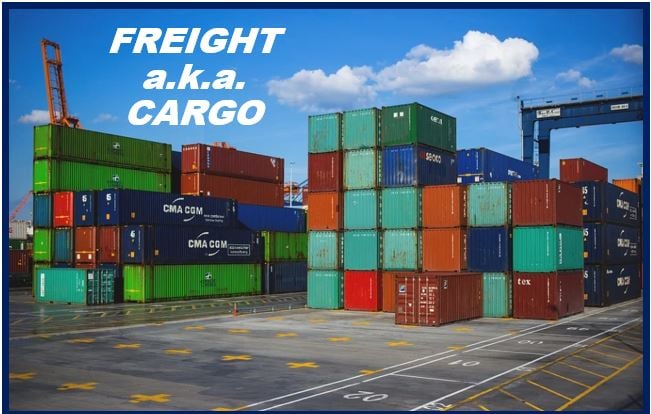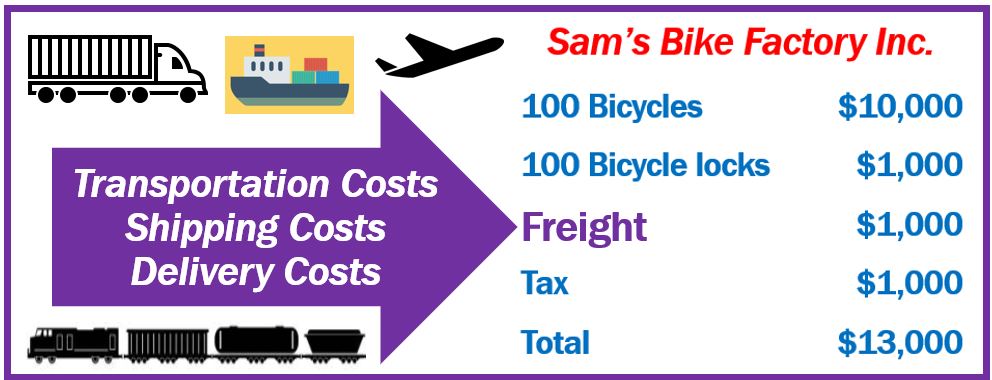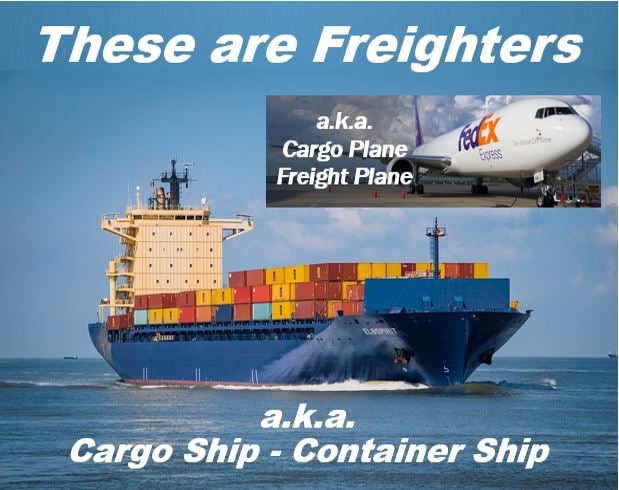Freight refers to products, goods, or merchandise that are transported in a ship, train, airplane, truck, or van. In other words, we can carry freight by air, sea, or land.
In this context, the term cargo means the same as freight. However, unlike freight, we cannot use cargo as a verb.
Historically, freight has referred to transportation by land, unlike cargo which is for sea or air transportation. Once freight arrives on land, it is transported to its destination.
That is why the terms freight train or freight truck are much more common than cargo trucks or trains. Ships and planes have generally been called cargo planes or cargo ships. However, there is a lot of overlap today and you might see and hear the two terms – cargo and freight – used interchangeably in virtually all situations.

More than a certain weight
FedEx defines freight as any shipment that weighs more than 150 lbs (68 kg). “Freight shipping is the transportation of goods, commodities and cargo in bulk by ship, aircraft, truck or intermodal via train and road. It can be transported domestically or internationally by land, air or sea,” says FedEx.
Etymology of Freight

Etymology is the study of the origins or words, i.e., where they came from, as well as how their meaning evolved or developed over time.
As a noun, the term freight first appeared in the English language in the 15th century. At the time, freight just meant “transportation of goods and passengers by water.” It was a variant of the Middle Dutch word FRAGHT and Middle Low German VRACHT.
The Spanish word FLETE, French FRET, and Portuguese FRETE also come from Middle Low German.
Delivery costs or shipping costs

In the world of business, especially logistics, we can also use the word freight when talking about transportation or delivery charges. Logistics refers to the process of managing how goods and other resources are purchased, brought to your company, stored, and delivered to their final destination.
If my supplier quotes me a price of $1,000 for something I need to buy, I might ask: “And what about freight?” The supplier may answer: “$60 freight must be added to the $1,000.”
This means that transportation charges are $60.
When freight is an adjective or root word

We sometimes use the term as an adjective.
For example, a freight train is one that transports goods rather than passengers. The same applies to a freight plane or cargo plane.
The noun freighter usually means a cargo ship, but it may also refer to a cargo plane, truck, or train.
A massive sector of the economy
The transportation of goods and livestock both domestically and international is a multibillion dollar business. In today’s economy, consumers purchase goods and services from all over the world.
In the UK, for example, I can buy strawberries in the winter from South Africa or Israel, while a consumer can walk into a Walmart store in Mexico City and buy Canadian blackberries.
If you just look at shipping, i.e., goods and livestock transported by ship, the global market was worth $14 trillion in 2019.
Advancements in technology and increased environmental awareness are driving the freight and cargo industry towards more sustainable practices, aiming to reduce carbon footprints and improve energy efficiency.
